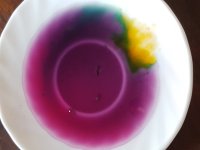antichode
Esteemed member
Can we use indicators like phenolphthalein to aid in salting mescaline? I’m not familiar with using indicators so I have no idea how they work or if they are super accurate. In the past I’ve used my ph meter to salt mescaline sulfate to a ph of 7 from xylene, the problem being that the small amounts of xylene present in the aqueous phase destroy my ph probe casing. I guess I could be more patient and careful…. I’d like to convert some of my citrate salt into sulfate with a little a/b. Perhaps I can do this on a stir plate with the right kind of indicator in solution?


